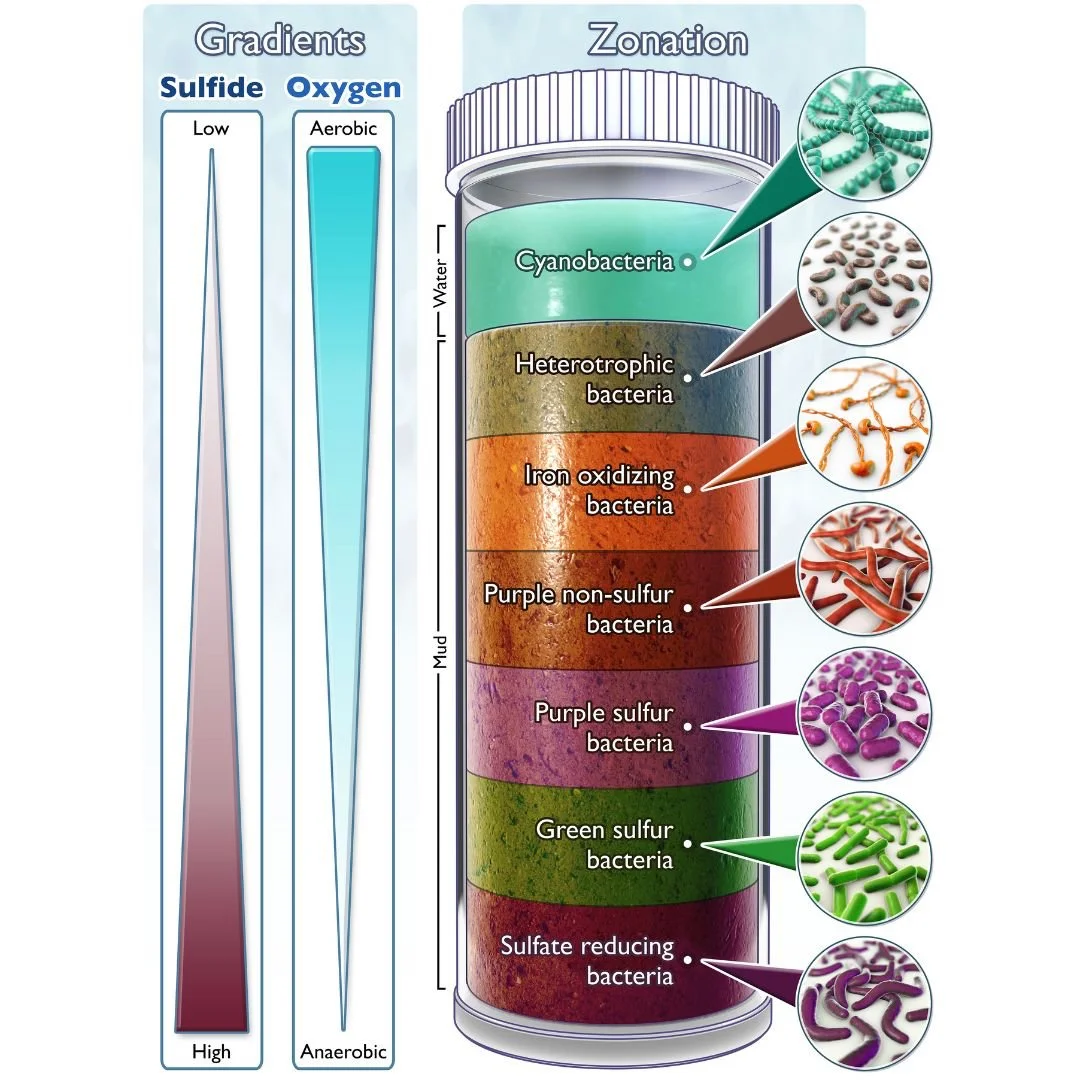Why Microbes Matter
Micro-organisms, including bacteria, archaea, fungi, algae, and viruses, are usually invisible to the human eye. They live around us and within us, making up around 15% of all biomass on Earth. Microbes originated as early forms of life around 3.8 billion years ago. Microbes are commonly referred to when talking about diseases, infections, and sickness, however only around 1400 species of micro-organisms have actually caused harm to the human species out of at least 1 trillion other species. Microorganisms are integral to all of life; for example, photosynthetic bacteria produce around half of all oxygen. Humans have used the vast variety of microbes to shape society: they are used in fermentation, as catalysts in reactions, and as pharmaceuticals.
Micro-organsims are vital to our ecosystems, and Winogradsky columns are a great way to observe different functions of these microbes. In a fully matured Winogradsky column, you can observe layers of different types of microbes. These layers form due to a gradient in oxygen and sulfide levels in the mud sample. Since a Winogradsky column is a self contained ecosystem, columns develop their own amounts of different microbial groups.
These layers have different functions for the colony. The top layers are oxic, meaning they are able to access light and oxygen. The bottom layers transition to being anoxic, meaning there is no oxygen For example, the prevalent cyanobacteria creating a green color in the top layer produce oxygen through photosynthesis, and in the bottom layers, bacteria oxidize sulfur into sulfate.
